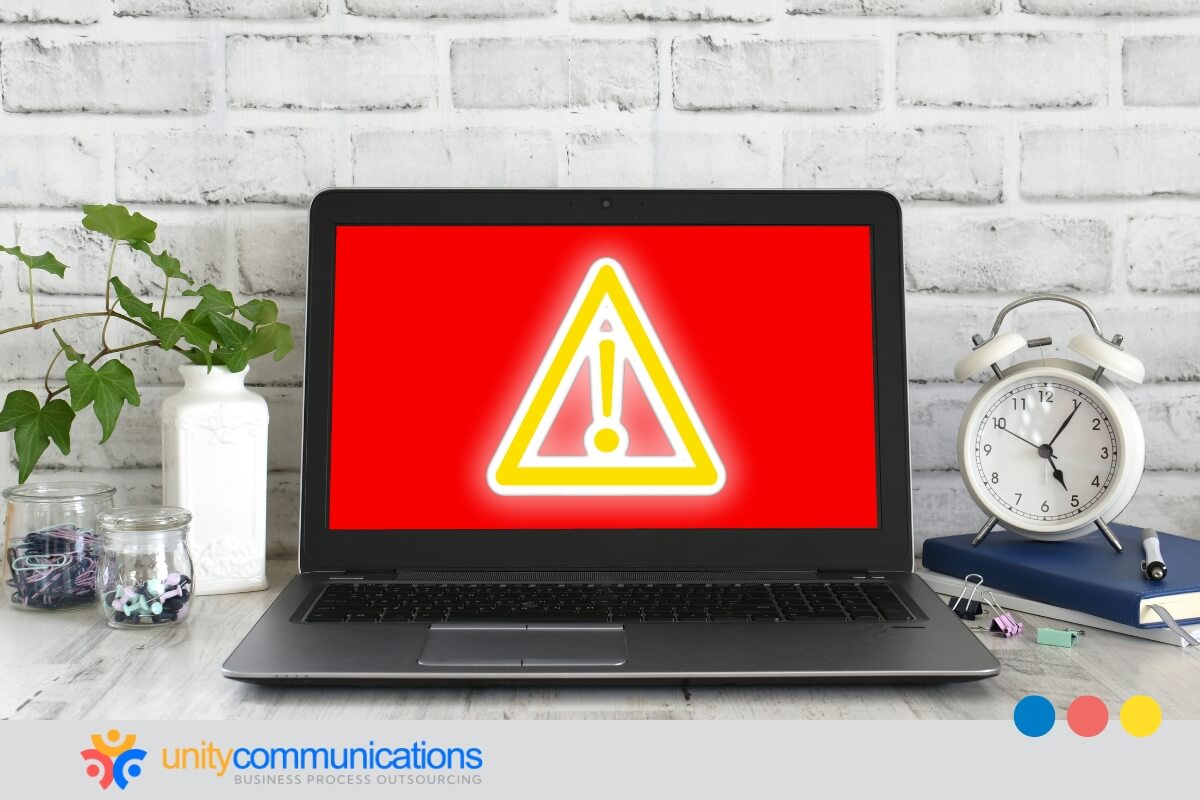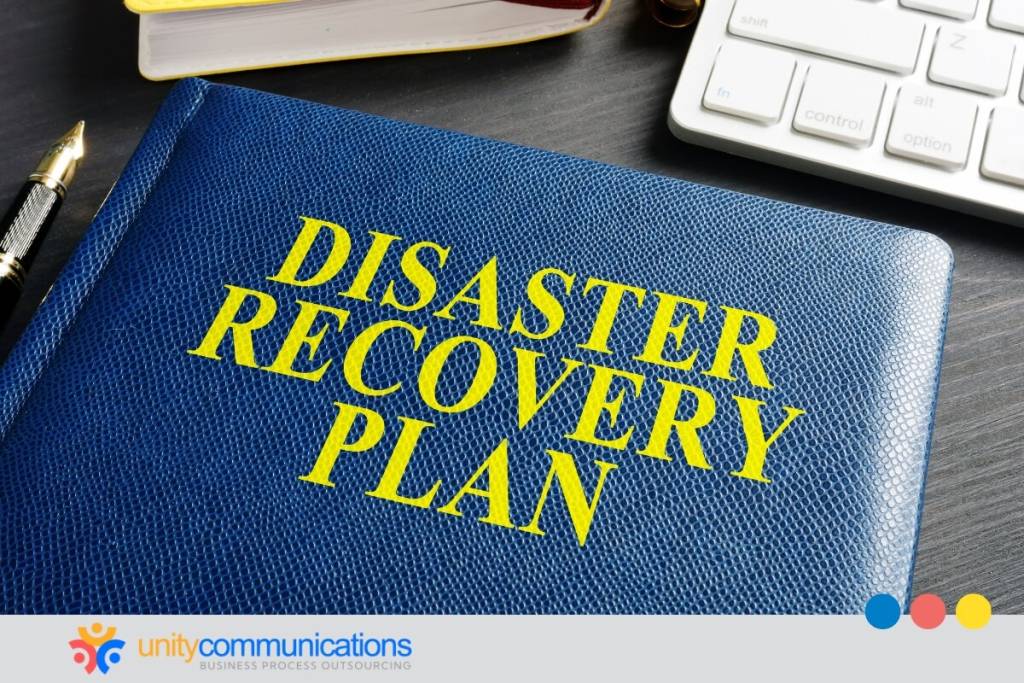Table of Contents
Every business aims to stay on course, but disruptions are inevitable and can quickly derail operations. For companies that rely on business process outsourcing (BPO), the stakes are higher, as setbacks can affect internal teams and external partners.
In multi-vendor outsourcing, the complexity increases significantly. Disasters can ripple across providers, heightening the risk to business continuity. Coordinating recovery efforts across different BPO teams requires careful planning. But how can this be achieved?
Keep reading and explore effective disaster recovery strategies tailored for multi-vendor outsourcing environments.
Why disaster recovery matters in multi-vendor outsourcing

Disasters can happen when you least expect them. A cyberattack, a server crash, or a power outage can quickly disrupt operations, causing massive losses, frustrated customers, and reputation damage.
Problems compound when you work with several BPO vendors. Although outsourcing offers cost savings, access to specialized expertise, and scalability, it also introduces challenges and threats.
Notably, Protiviti’s 2024 survey highlighted that third-party risks experienced the most significant rise among all risk categories. This underscores the need to strengthen oversight and improve vendor coordination to protect continuity.
Implementing a comprehensive disaster recovery plan is crucial. Such a plan should:
- Restore operations swiftly to minimize business disruption.
- Reduce downtime to maintain productivity and service levels.
- Reinforce customer trust through prompt and effective responses.
- Facilitate coordination among providers to ensure unified action.
- Clearly define roles and responsibilities for all stakeholders during crises.
- Safeguard data integrity and ensure backup availability to prevent critical information loss.
- Establish clear communication protocols for both internal teams and external stakeholders.
- Undergo regular testing and updates to remain effective against evolving threats.
A business with a clear, actionable continuity plan can overcome setbacks and build a strong reputation as a trusted, reliable partner, even in times of crisis.
Key disaster recovery strategies in multi-vendor outsourcing

What BPO firms typically employ to prepare for and address emergencies is a combination of strategic planning, technological investment, and coordinated response efforts.
However, as the other party in the partnership, your organization is also vital in building resilience. Developing business continuity plans, assessing risks, and training internal teams can complement your BPO providers’ efforts and accelerate recovery.
To support this shared responsibility, here are strategies for strengthening your disaster recovery plan and ensuring a seamless response when disruptions occur:
1. Establish a comprehensive disaster recovery policy encompassing all vendors
A clear policy for disaster recovery in multi-vendor outsourcing sets the foundation for an effective response, enhances accountability, and streamlines recovery efforts. This policy should define each vendor’s roles and responsibilities, including response times and recovery expectations. This alignment motivates them to work together efficiently during a disruption, reducing delays and confusion.
Involve key stakeholders to create an effective policy. Review and update the guidelines regularly to accommodate technological changes, evolving BPO relationships, and shifting business priorities.
2. Standardize response procedures across all vendors
Consistency in response is critical when working with multiple vendors. Standardized recovery procedures encourage all vendors to follow the same process, reducing miscommunication and operational delays. Clear guidelines for identifying issues, escalating problems, and restoring services improve coordination.
Collaborate with BPO teams to create a unified recovery framework. Conduct joint training sessions to align all parties and reinforce consistent execution.
A standardized approach to disaster recovery in multi-vendor outsourcing allows your business to recover faster with fewer complications.
3. Conduct regular disaster recovery drills with BPO providers
Regular drills help identify gaps in the recovery process and improve response times. Simulated scenarios allow vendors and internal teams to refine their roles and address weaknesses before an actual disruption occurs.
Rotate through different disaster scenarios to cover a wide range of threats. After each drill, review performance and adjust the plan as needed. Consistent testing strengthens overall readiness and response efficiency.
4. Leverage real-time monitoring technologies for disaster management
Real-time monitoring technology can help you quickly detect and respond to issues, reducing downtime or disruptions. Automated alerts and centralized dashboards provide a comprehensive view of system health to identify vulnerabilities before they escalate.
Effective disaster recovery in multi-vendor outsourcing requires seamless integration of monitoring systems across all vendors. When different providers manage various aspects of a business, a unified monitoring platform improves visibility and coordination.
Real-time data and automated insights support faster decision-making and a more synchronized recovery effort. They align BPO providers, preparing them to act swiftly during a disruption.
5. Ensure robust data security across multiple platforms
Protecting data during a disaster is critical because it is the backbone of business operations. Whether it’s customer information, financial records, proprietary tools, or communication logs, losing access to them can paralyze an organization.
Without proper safeguards, cyberattacks, hardware failures, or natural events can result in data loss, corruption, or unauthorized access. This can lead to financial loss, regulatory penalties, and reputational damage.
Secure data by implementing robust access protocols across all vendors, such as data encryption, backup, and multi-factor authentication. Conduct regular audits to determine whether providers follow security policies and recovery standards.
Strong data integrity measures protect business continuity and maintain customer trust. It also maintains compliance with industry laws and standards.
6. Craft a crisis communication plan across vendors
Effective communication is essential during a disaster because it provides timely, accurate information to everyone involved. Without it, delays, misinformation, or missed steps can worsen the disruption’s impact and damage trust.
Establish a clear communication plan with defined contact points, escalation paths, and update intervals to keep everyone informed and reduce confusion. Outline who is responsible for delivering updates, how to communicate messages, and what information to share at every recovery phase. Conduct regular communication tests to identify weak points and improve response times.
Clear communication helps coordinate response efforts, reduce panic, and keep critical operations moving. It maintains stakeholders’ focus on their roles and responsibilities even under pressure.
7. Conduct a multi-vendor risk assessment to prevent failures
Working with multiple vendors complicates BPO challenges. Each provider might follow its own security protocol, recovery process, and system dependency.
A thorough risk assessment is essential to identify vendor dependencies, integration issues, service continuity gaps, and similar vulnerabilities. This involves mapping out all outsourced services, reviewing service-level agreements (SLAs), evaluating each disaster recovery capability, and determining points of failure across systems and workflows.
Regular audits, tabletop exercises, and vendor risk questionnaires can uncover hidden risks and align contingency plans across all parties. Understanding multi-vendor outsourcing threats helps anticipate crises and develop targeted solutions.
8. Use redundancy to minimize downtime and improve continuity
Redundancy is crucial for maintaining operations during disruptions, especially in disaster recovery in multi-vendor outsourcing. In such environments, an issue with one system or provider can affect the entire operation. Backup systems, failover networks, and cloud-based solutions support business continuity even if a vendor experiences a disruption or outage.
Backup partnerships and diversified supply chains can also reduce the risk of relying on a lone provider. Cross-training teams and aligning recovery protocols across BPO companies improve response time and consistency. Strong redundancy planning minimizes downtime and promotes business continuity amid a crisis.
9. Review and update disaster recovery plans regularly
With over 60% of disruptions causing losses above $100,000, business interruptions are becoming costlier. Disruptions can further increase as you use more technology or engage with several providers. Maintaining an adaptable disaster recovery plan is essential to avoid losing significant money.
To stay prepared, review and update recovery plans annually and after any major disruption. Insights from drills and actual incidents can identify weaknesses and refine the strategy.
With a flexible and regularly updated plan, you and the BPO providers can respond quickly to a problem, minimize downtime and financial losses, protect customer trust, and achieve long-term stability.
The bottom line

Disaster recovery in multi-vendor outsourcing is about building long-term resilience. With disruptions becoming more frequent and costly, you need a solid incident response plan that aligns internal and external efforts.
Strong policies, consistent procedures, and clear vendor communication are key to minimizing downtime and maintaining business continuity.
Partnering with experienced BPO providers strengthens your ability to manage disruptions and improve operational efficiency. Let’s connect to see how a tailored BPO strategy can support your recovery goals.




